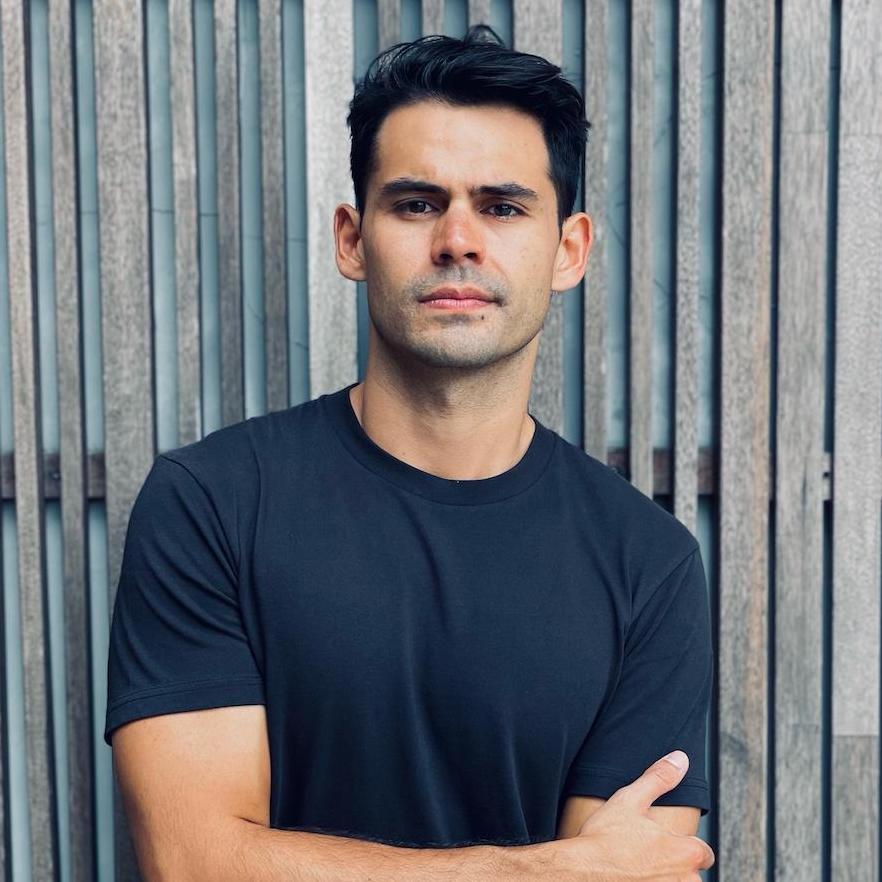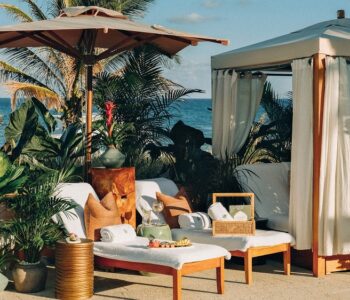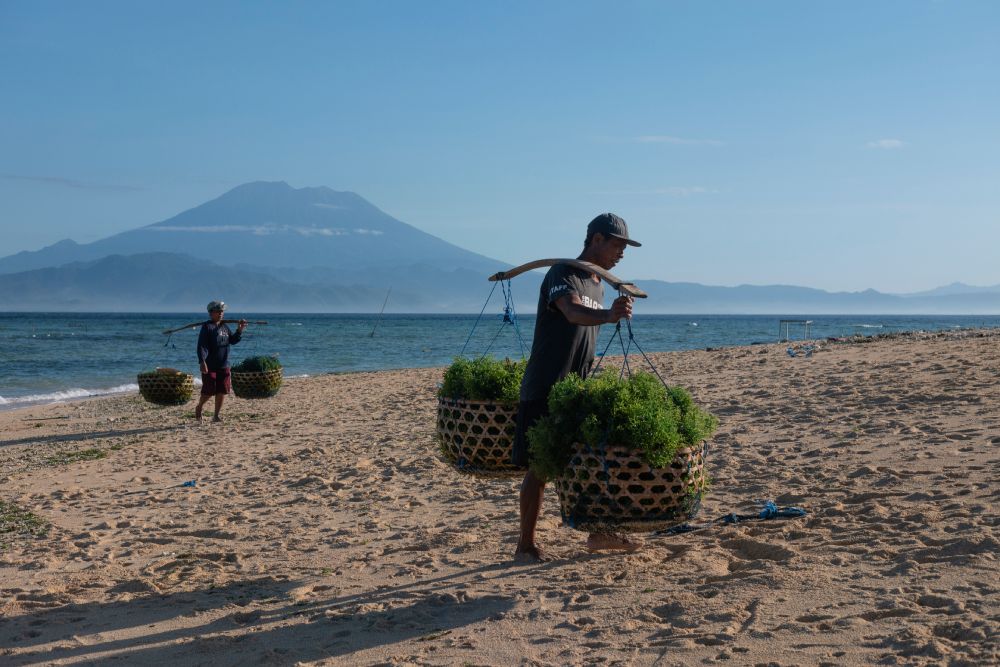
Across the Badung Strait lies three special islands off the coast of mainland Bali. The now famous Nusa Penida, a large and rugged isle that has become a mainstream day-tripper destination, and the two smaller islands of Nusa Lembongan and Nusa Ceningan.
Between Lembongan and Ceningan, a unique aspect of local life is found, in the narrow channel through which the sea squeezes on the daily. Beneath these waters are abundant seaweed farms, identified by the quadrants of dark green that shadow the seafloor.
Every morning the seaweed farmers wade through the shallows to harvest their ocean crop, picking out bunches of seaweed —or more accurately, sea ‘moss’— and fill up their little bobbing boats.

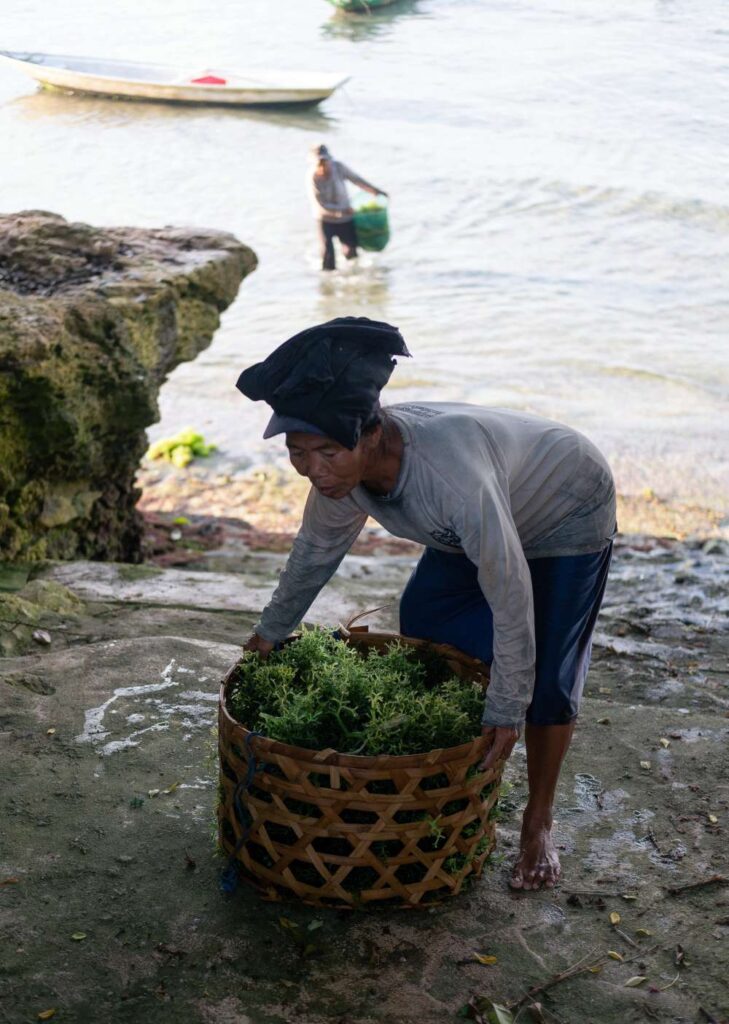
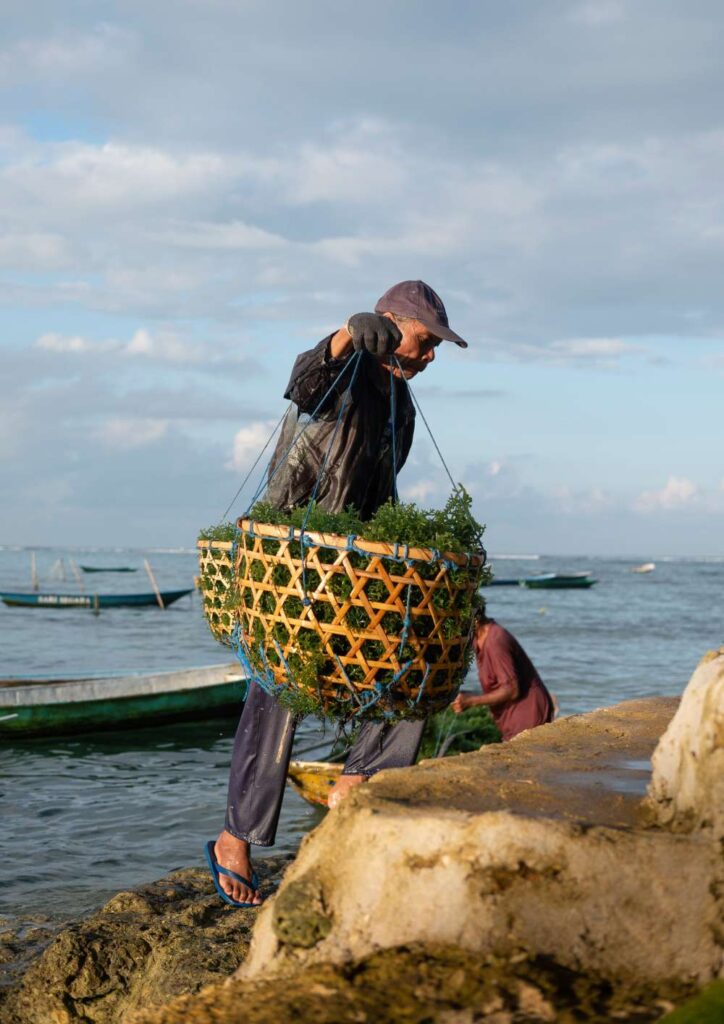
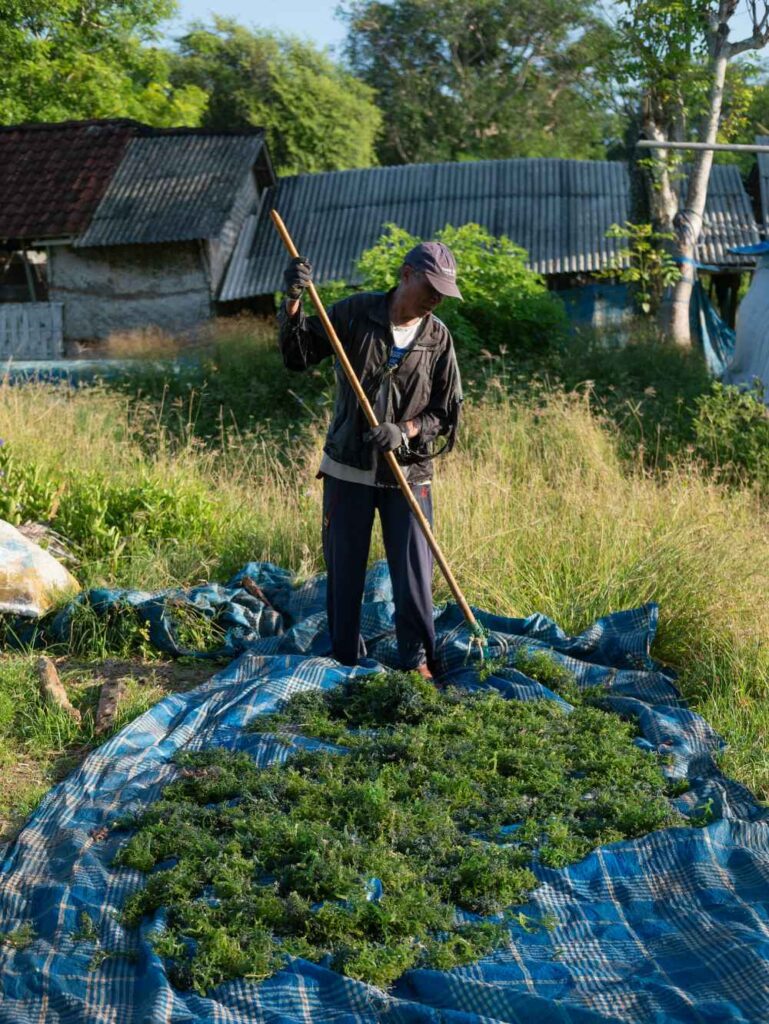
When the seaweed farmers return to shore, they haul their baskets (40kg each!) onto flatlands and dry their goods under the sun. “The price is around IDR 14,000 per kilo,” says 62-year old Jero Mangku I Wayan Siteng. “That’s for the dry weight… our hauls lose 90% of their weight once they’ve dried,” adds the Lembongan local.
Pak Wayan estimates that the industry started back in 1982, when someone brought sea moss over from Lombok and asked the coastal communities in Nusa Lembongan to grow it. The channel between Ceningan and Lembongan is perfect for it, the clear and shallow waters ensuring the moss gets plenty of sunlight for photosynthesis… and nature does the rest.
Its cultivation is time-consuming, however, much like any terrestrial farm. No seeds are necessary: seaweed and sea moss reproduce vegetatively, new fronds sprouting from just a sliver and growing into a healthy bunch. But they must be prepared for farming, which is commonly the woman’s role in the coastal communities of Lembongan. Sitting under the shade they tie two-inch seedlings to a long nylon line, which is then planted and stretched along the shallow seafloor. Each farming family will have their own demarcated plot of sea, defined by wooden posts jutting out of the waters where their bobbing rowboats get tied to.
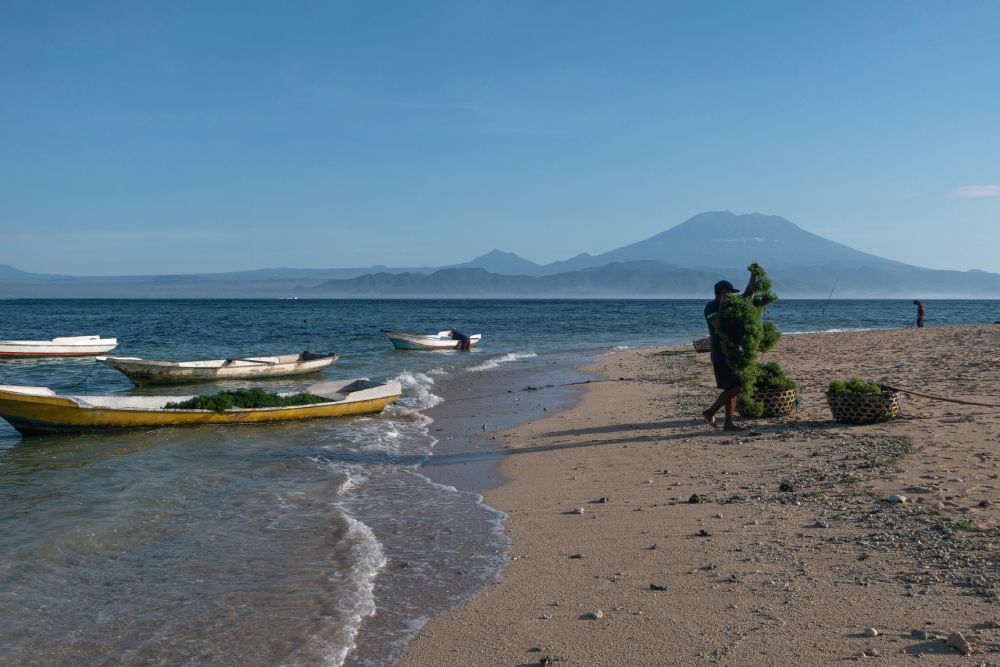

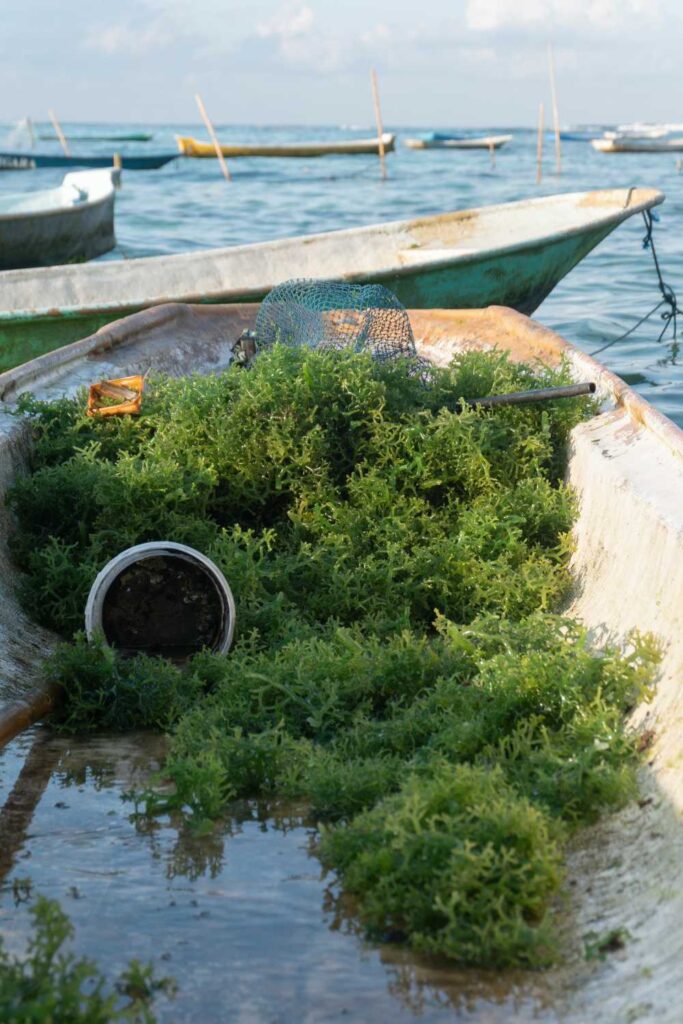
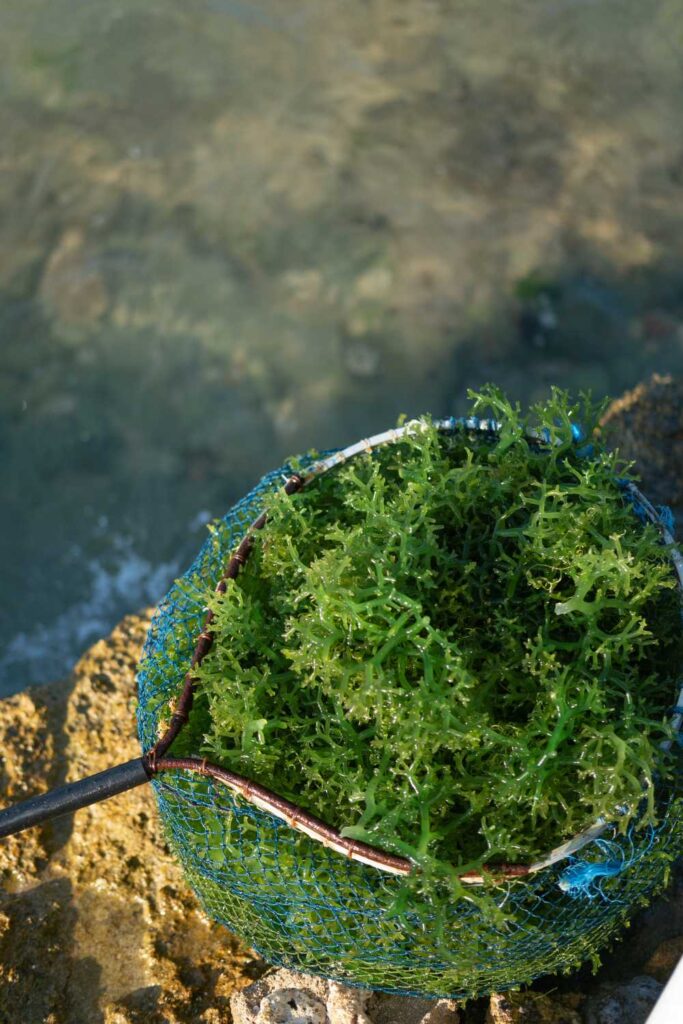
After around 35 days the seedlings have grown into substantial clumps ready to be collected, harvested and dried. Pak Wayan says that most of the sea moss from Lembongan gets bought and used for the skincare industry abroad, sold off at a lucrative price. Euchema, the particular sea moss variety grown here, is rich in carrageenan, an ingredient commonly used as a gelling, thickening or stabilising agent. When extracted, it is used across a large number of industries, be it food processing, brewing, toiletries, dairy products, pharmaceuticals and skincare.
Of course, all of that is rather modern. This particular type of seaweed is also edible (commonly eaten and grown in Philippines, known as gusô). In fact, a local Balinese dish rujak bulung uses the sea moss as its base: a salad of sorts dressed with a citric and spicy sauce.
When visiting Nusa Lembongan or Nusa Ceningan, take a moment to notice these hardworking seaweed farmers as they wade through the blue seas under the sun. You’ll see them harvesting early in the morning when the sun is low and cool.

